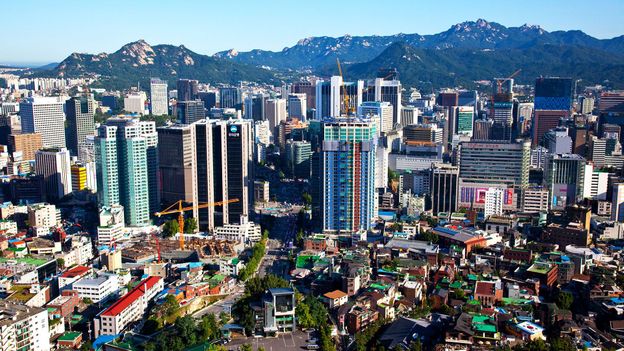Historical Background
Early Settlements
Korean cities have a rich heritage dating back thousands of years. The earliest settlements emerged along riverbanks, such as the Han River in Seoul, laying the foundation for urbanization.
Influence of Dynasties
Throughout history, Korean cities were influenced by various dynasties, each leaving its mark on architecture, culture, and governance. From the majestic palaces of the Joseon Dynasty to the Buddhist temples of Gyeongju, remnants of past eras still grace the modern landscape.
Modernization and Urban Development
Industrialization Era
The late 20th century saw South Korea undergo rapid industrialization, transforming agrarian landscapes into bustling metropolises. Cities like Incheon and Daegu emerged as manufacturing hubs, driving economic growth and urbanization.
Technological Advancements
In recent decades, Korean cities have embraced technology, becoming hubs of innovation and digitalization. From high-speed internet connectivity to smart infrastructure, advancements have propelled Korea into the digital age.
Cultural Significance
Traditional Practices
Despite modernization, Korean cities proudly preserve traditional customs and rituals. Visitors can experience age-old traditions like hanbok-wearing in Seoul’s Bukchon Hanok Village or participating in tea ceremonies in Jeonju.
Contemporary Arts and Entertainment
Korean cities are synonymous with cutting-edge entertainment and cultural trends. From K-pop concerts in Seoul’s Olympic Park to indie film festivals in Busan, the arts scene thrives, captivating audiences both locally and globally.
Economic Powerhouses
Major Industries
Korean cities are economic powerhouses, home to multinational corporations spanning diverse industries. From Samsung’s headquarters in Seoul to Hyundai’s manufacturing plants in Ulsan, these companies drive innovation and global trade.
Global Trade Connections
Strategically located, Korean cities serve as vital hubs for international trade and commerce. Ports like Busan handle a significant portion of Asia’s maritime traffic, facilitating trade with countries around the world.
Architectural Marvels
Skyscrapers and Landmarks
Korean cities boast an impressive skyline adorned with towering skyscrapers and iconic landmarks. From the futuristic Dongdaemun Design Plaza in Seoul to the majestic Busan Tower overlooking the sea, architectural marvels abound.
Preservation Efforts
Despite rapid development, efforts are underway to preserve Korea’s architectural heritage. Historic neighborhoods like Bukchon Hanok Village and Jeonju Hanok Village offer glimpses into Korea’s past amidst the modern urban sprawl.
Vibrant Lifestyle
Food Culture
Korean cities are renowned for their diverse culinary offerings, ranging from fiery kimchi stews to savory street food delights. Food markets like Gwangjang Market in Seoul offer a sensory feast for visitors seeking authentic flavors.
Nightlife and Entertainment
As the sun sets, Korean cities come alive with vibrant nightlife and entertainment options. From trendy rooftop bars in Gangnam to traditional makgeolli houses in Insadong, there’s something for everyone to enjoy after dark.
Transportation Infrastructure
Efficient Public Transit
Korean cities boast world-class public transportation systems, including subway networks and high-speed trains. Seoul’s subway system, one of the most extensive in the world, provides convenient access to every corner of the city.
Innovation in Mobility
Innovation is driving the future of mobility in Korean cities, with initiatives such as electric scooters and autonomous vehicles reshaping urban transportation. Smart city projects aim to improve efficiency and sustainability in the movement of people and goods.
Environmental Sustainability
Green Spaces
Amidst the urban hustle, Korean cities prioritize green spaces and environmental sustainability. Parks like Seoul Forest and Namsan Park offer tranquil retreats amidst the concrete jungle, promoting a healthy lifestyle and biodiversity.
Eco-friendly Initiatives
Korean cities are at the forefront of eco-friendly initiatives, implementing policies to reduce carbon emissions and promote renewable energy. From solar-powered streetlights to waste recycling programs, sustainability is a key focus for urban development.
Education and Innovation
Academic Excellence
https://guloseu.kr/ boast world-renowned universities and research institutions, fostering a culture of academic excellence and innovation. Institutions like Seoul National University and KAIST attract top talent from around the globe, driving breakthroughs in science and technology.
Research and Development Centers
Innovation hubs like Pangyo Techno Valley in Seoul and Daedeok Science Town in Daejeon serve as catalysts for technological advancement, bringing together startups, research centers, and multinational corporations to collaborate and innovate.
Tourism Attractions
Historical Sites
Korean cities are treasure troves of historical landmarks and cultural heritage sites. From UNESCO World Heritage sites like Changdeokgung Palace in Seoul to the ancient fortress of Hwaseong in Suwon, history buffs can immerse themselves in Korea’s storied past.
Tourist Hotspots
Beyond history, Korean cities offer a plethora of tourist attractions for visitors of all interests. From the bustling shopping districts of Myeongdong in Seoul to the scenic beaches of Haeundae in Busan, there’s no shortage of experiences to discover.
Challenges and Solutions
Overcrowding
Rapid urbanization has led to challenges such as overcrowding and congestion in Korean cities. Urban planners are exploring solutions like decentralized development and improved public transportation to alleviate pressure on city centers.
Infrastructure Management
Managing infrastructure amidst rapid development poses challenges for Korean cities. From upgrading aging facilities to implementing smart city technologies, authorities are working to ensure sustainable growth and efficient service delivery.
Future Prospects
Urban Planning Strategies
Korean cities are embracing innovative urban planning strategies to shape their future landscapes. Concepts like eco-friendly neighborhoods, mixed-use developments, and pedestrian-friendly streets aim to create livable, resilient cities for future generations.
Sustainable Growth Models
Sustainability is at the forefront of Korea’s urban agenda, with initiatives focusing on energy efficiency, waste management, and green infrastructure. By adopting sustainable growth models, Korean cities aim to balance economic development with environmental stewardship.
Conclusion
In conclusion, Korean cities offer a captivating blend of tradition and modernity, where ancient heritage coexists with cutting-edge innovation. From the bustling streets of Seoul to the tranquil shores of Jeju, each city tells a unique story of resilience, progress, and cultural richness.

